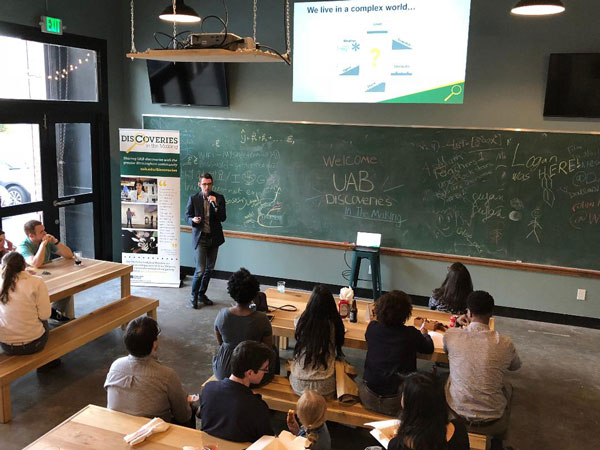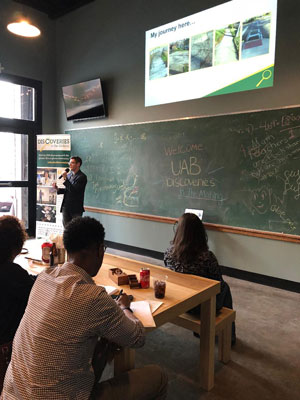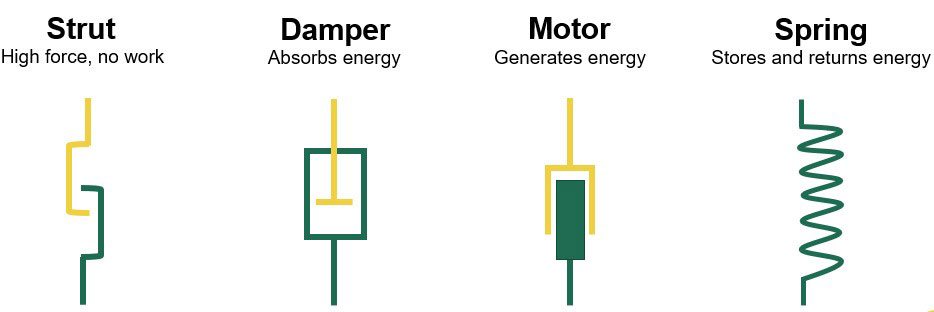All of us have walked at some point during this day, maybe from our bed to the bathroom or from the parking lot to our workplace. For many of us, walking to and from places is a time to catch up with social media or listen to our favorite podcasts, making it a mundane and unexciting task of our daily life.
Now, take a moment to reflect where you last walked. Did you notice how easily you navigated the terrain, the steps and the people and objects? It might surprise you to know that though walking might appear very simple, there are many complex functions performed by our musculoskeletal system to help us walk.

Daniel Kuhman, a UAB PhD student in the Department of Rehabilitation Sciences, studies the musculoskeletal system, and he recently shared how his current work on the musculoskeletal system function is helping change the traditional and simplistic view.
The musculoskeletal system provides form, support, stability and movement to the body. It consists of the bones of the skeleton, muscles, cartilage, tendons, ligaments, joints and other connective tissue that supports and binds tissues and organs together. The musculoskeletal system works when muscles of the body connect to the bones with the help of tendons to perform rotation and movement around joints thus helping us to walk/move. There are many intricate forces involved in just walking. For example, when we walk uphill, our muscles generate energy for us to gain potential energy. When we walk downhill, our muscles absorb energy as we lose the potential energy. And, when we walk on a flat ground, an equal amount of energy is generated and absorbed. The muscles are classified into major groups depending on their traditionally understood functions.
Traditionally, the shape of the muscle correlated to its function. Moreover, depending on the shape, muscles can be classified into four main types.
Strut – high force, no work
Damper – absorbs energy; example, knee
Motor – generates energy; example, hip
Spring – stores and returns energy; example, ankle
However, recent research suggests that some muscles may perform more than the single function that was traditionally assigned to them. Daniel’s work is to determine if this is true and to understand how this occurs. He hypothesized that these different muscles might work as a motor when the task for a person is to climb uphill, as it requires a lot of energy generation.

To test his hypothesis, Daniel has developed an experiment where he records motion-tracking data when individuals are asked to walk uphill at three different slopes. With this data, he can create a skeletal model of the movements done by the individual. He also measures the amount of force the person applies to the floor to walk. The skeletal model and the walking force used helps him estimate the amount by which a muscle group performs a function. He found that the strut, the damper and the spring-like muscles could act as motor muscle when walking uphill. This was a unique find as it is widely believed that each muscle has an independent function. However, Daniel’s research shows that the muscles are mechanically versatile and can perform different types of functions depending on the requirement.
This new information will help us understand patient requirements and train them better during rehabilitation. If the musculoskeletal system did not have the mechanical versatility for different functions at the same time, we would have many clinical implications. For example, it would significantly reduce one’s ability to navigate a complex environment; there would be reduced community ambulation, reduced community participation and reduced quality of life.
This knowledge is not limited to clinical implications. A better understanding of our musculoskeletal system can be used to design better prosthesis for individuals that could mimic more of the natural functions of the limbs. This finding will also have an application in the robotics field where more sophisticated robots can be developed that can navigate complex environments just like humans. Daniel plans to continue working on this project with the aim to understand how the mechanical versatility of the muscles may be changed or affected in different diseases and conditions so that in the future we can devise better treatments and rehabilitation techniques for the patients.
